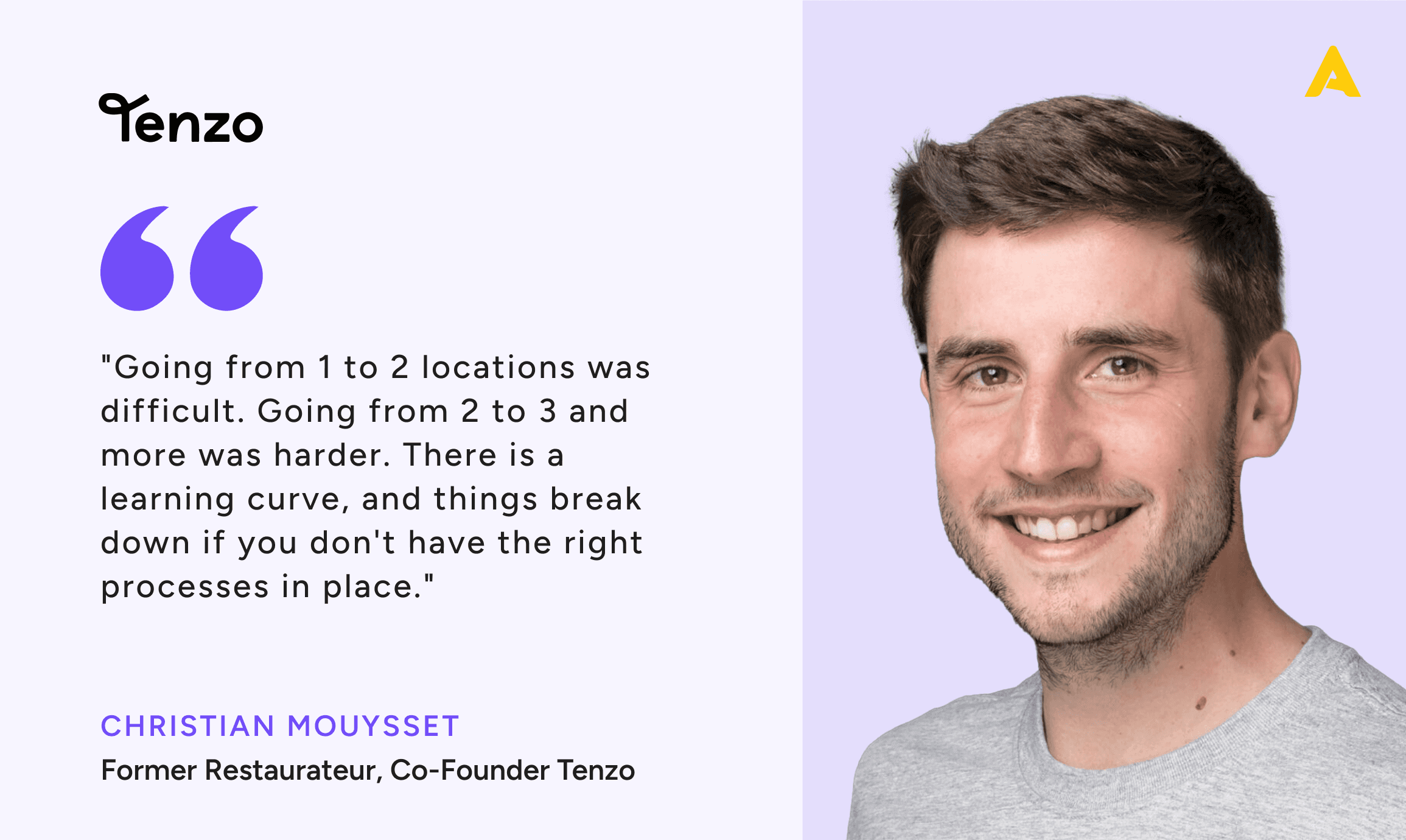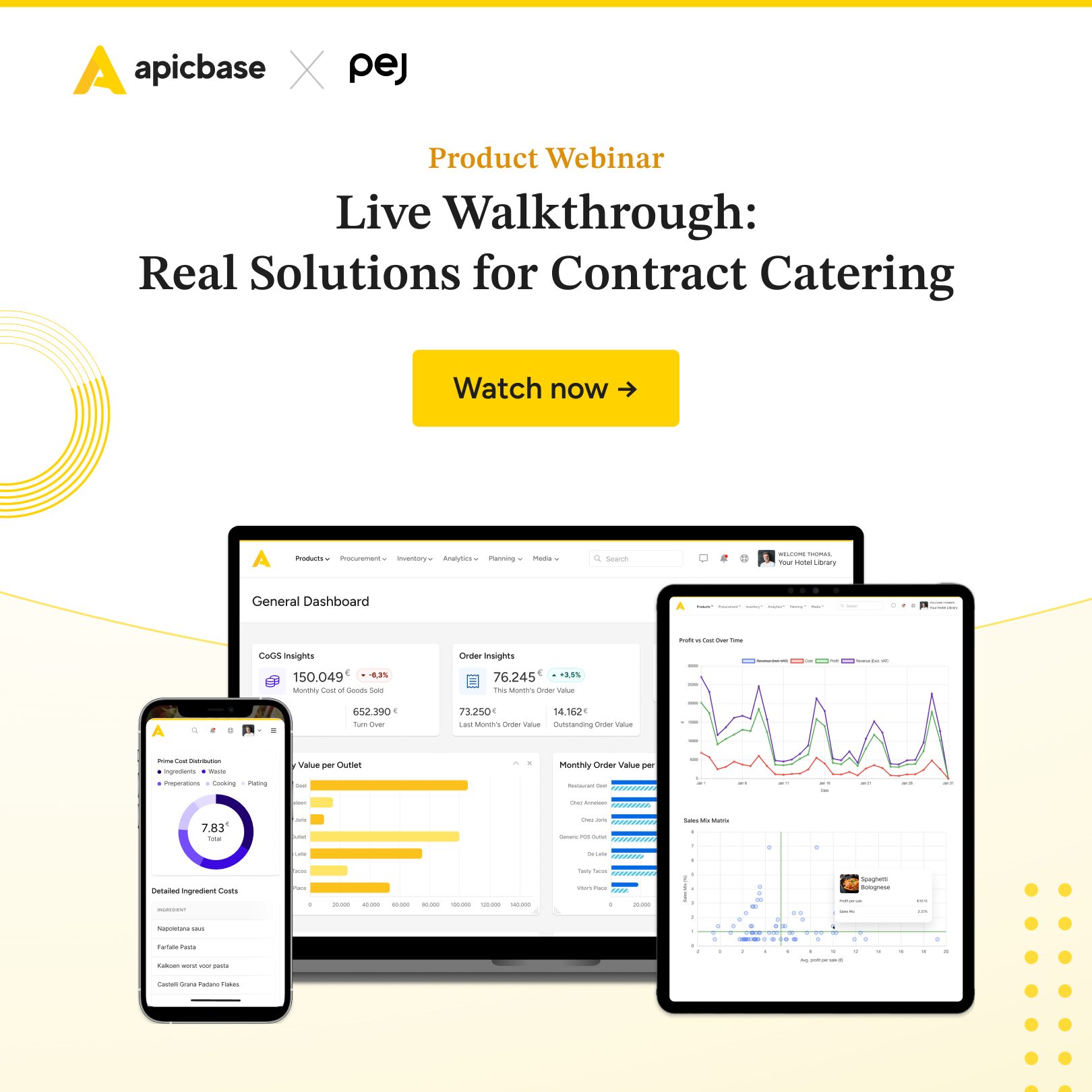“Going from 1 to 2 locations was difficult. Going from 2 to 3 and more was harder. There is a learning curve, and things break down if you don’t have the right systems and processes in place.”
We asked Christian M. how he overcame the challenges and scaled Hummus Bros to 6 units and 100s of corporate pop-up locations.
Today, Christian is at the helm of Tenzo, the forward-thinking BI and analytics platform, but before founding the software company, he co-founded and managed Hummus Bros for 13 years.
He reveals his growth process and how they managed daily activities:
🧑🍳 Consistency: “For a restaurant to be successful, customers need to know that when they go to that place, the experience will be the same every time.”
⚙️ Process-Driven: “Everything needs a process. Even the obvious things because if there’s room for interpretation, it might be interpreted differently, leading to an inconsistent customer experience.”
🤝 Hire the Right People: “Since every location is different, we’ve empowered our GMs to identify and hire the right people that fit into the company culture. They are trained to train their own teams.”
📈 Upsell: “Train your team always to upsell the correct product to match the order. Measure the results daily and motivate them to hit a bigger goal the next day.”
🏃 Control Labor Cost: “Look at labour as a percentage of sales and set parameters to know if you’re overstaffed or understaffed. Aim for productivity without compromising the guest experience.”
📲 Easy Access to Data: “The restaurant industry is fast-paced and runs on very tight margins. It’s very stressful since you need to get it right all the time. With easy access to data, you know exactly what needs to be adjusted, and you can make the right decisions every time.”
🗑️ Control Food Wastage: “Devise ways to use the full ingredient. If there are some vegetables left over that are not in the best shape to be on a dish, we’d cook them in a soup.”
🛢️ Harness the Potential of Bulk Buys: “There’s a huge difference if you buy a five-kilo box of tomatoes versus buying a pallet of tomatoes. We started rethinking recipes, menu and purchasing to reduce the costs.”
🌶 Fewer ingredients: “We wanted to make things easier to replicate and be more consistent. We reduced the number of ingredients by 1/3. This also helped us buy more in bulk.”
🙋♀️ Lead By Example: “My co-founder and I knew what it was like to work in the kitchens, clean the dishes, serve customers, keep toilets clean, and any other job in the restaurant. We wanted to know how to do it in the best possible way and then train people to do the same.”
Listen to the first episode of Apicbase’s Podcast: The Food Service Growth Show with Carl Jacobs to get more examples and insights on Christian’s approach🎙
👉 https://get.apicbase.com/podcast-show-episode-1/, and don’t forget to subscribe! There are many more great guests to come.


